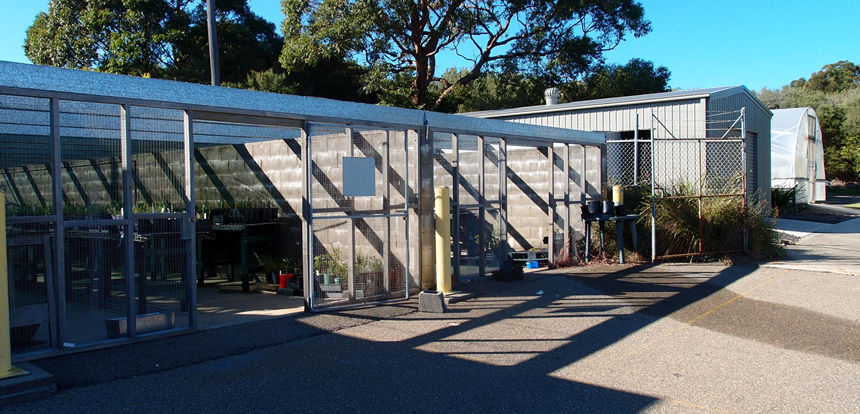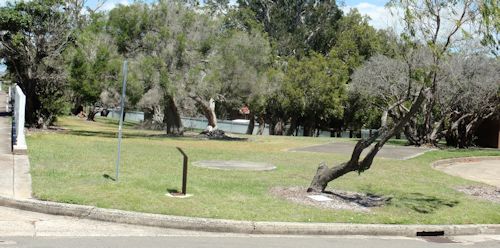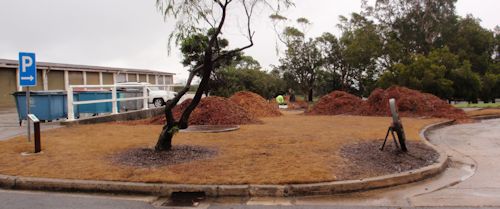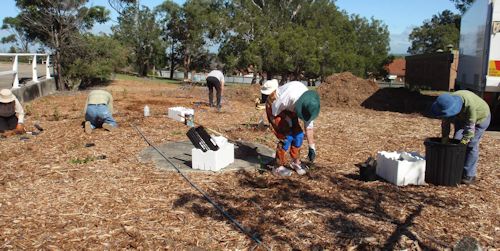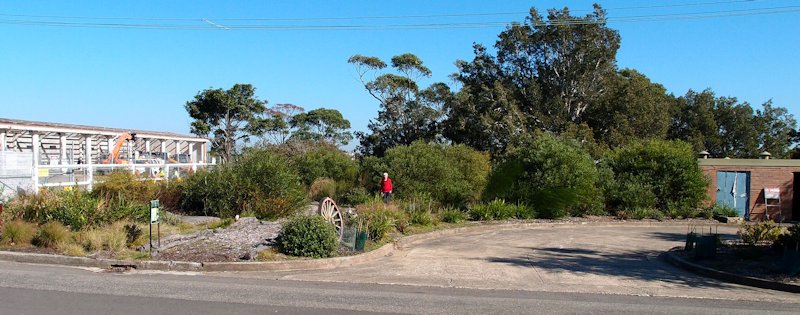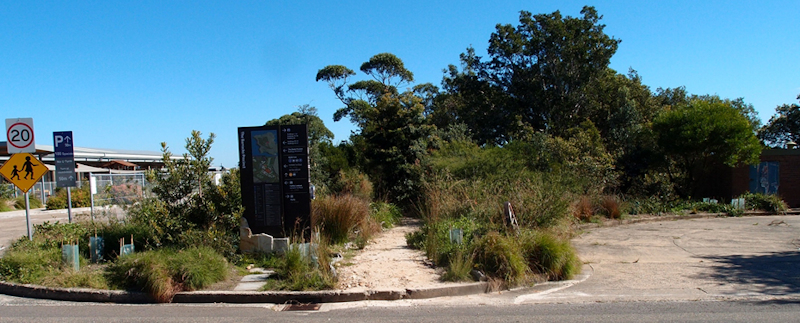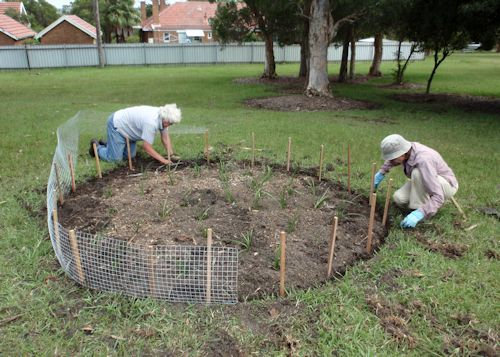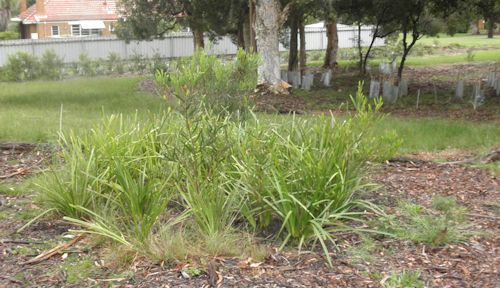Providing protection for our Long-nosed Bandicoots
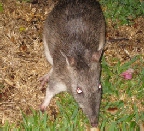
There is an endangered population of long-nosed bandicoots at North Head.
We have worked with the Sydney Harbour Federation Trust and Australian Wildlife Conservancy to develop some “vegetation links” - small areas of dense foliage where the bandicoots can take refuge, forage and hopefully nest.
Producing these links means that the bandicoots can forage in the mown grass and mulched areas and never be far from a safe haven.
Our first area was planted early in 2010 – the photo shows two volunteers
planting out the bandicoot refuge and putting a protective mesh around
it.
By early 2012 the area was thriving. The protective mesh had long
since been removed. Lomandra longifolia was already offering a hiding place for bandicoots, which were using
the area for refuge and to forage. Some of the surrounding grass has been removed and replaced with leaf
litter
and new plantings.

